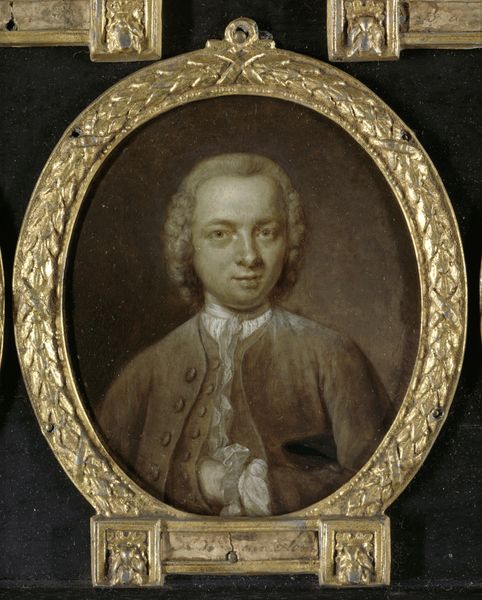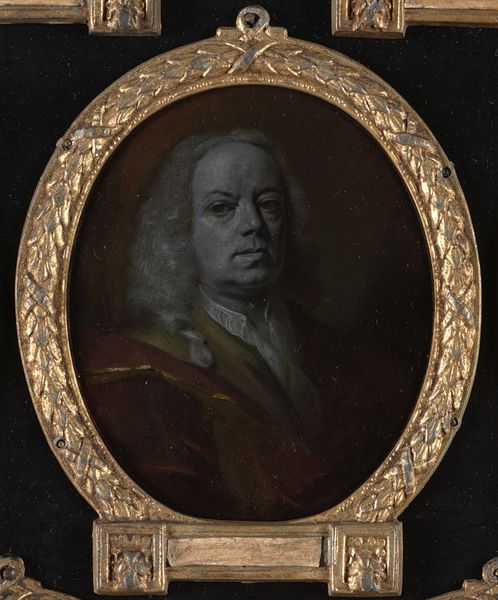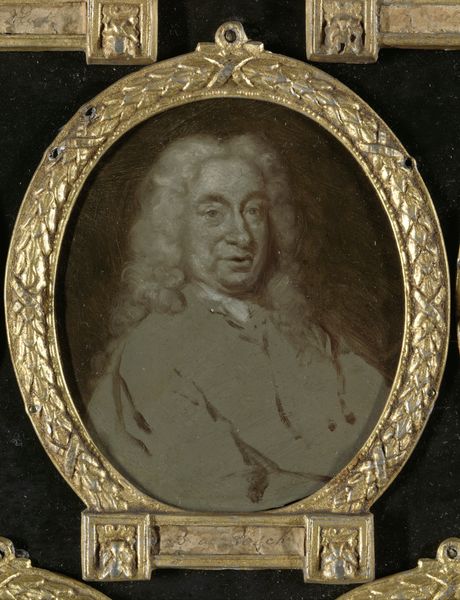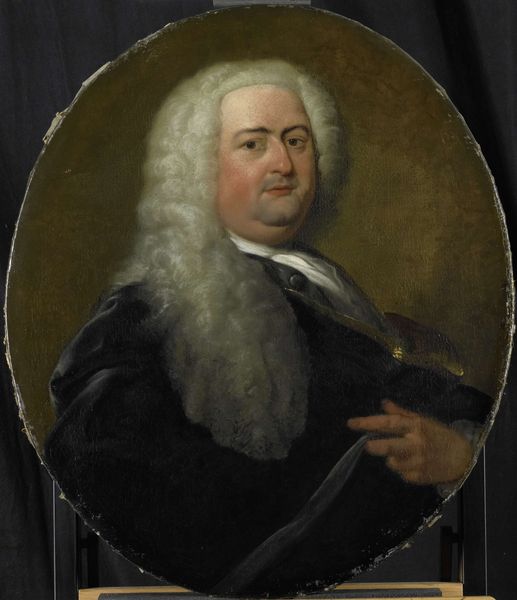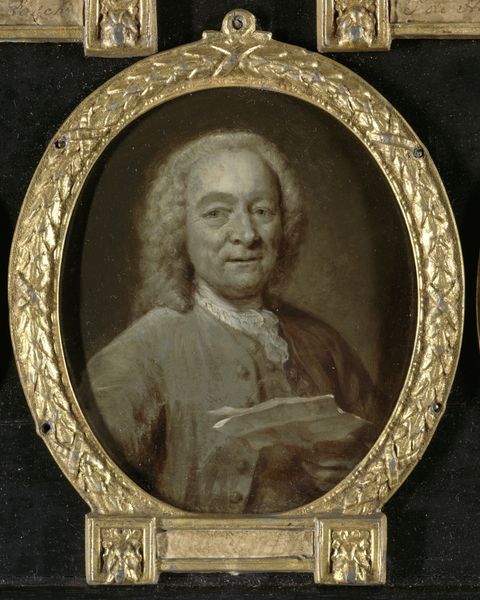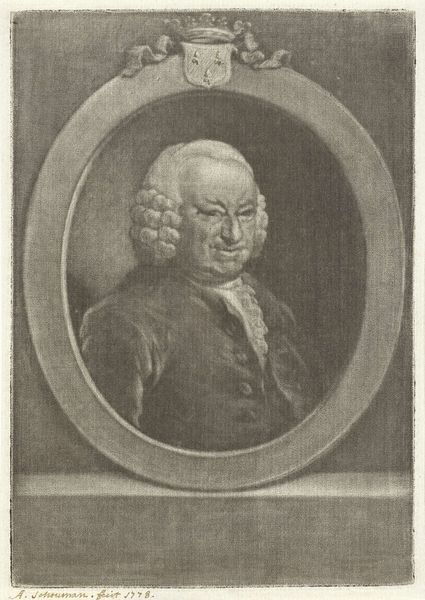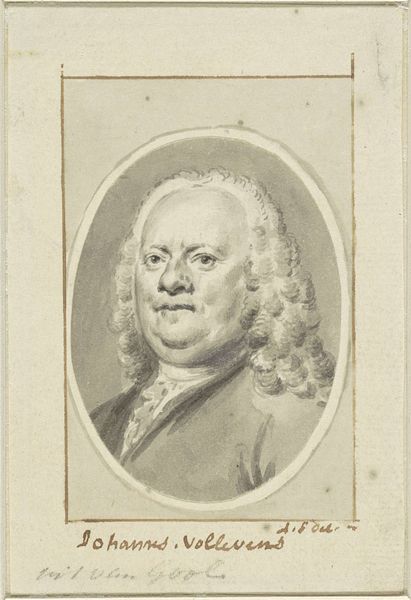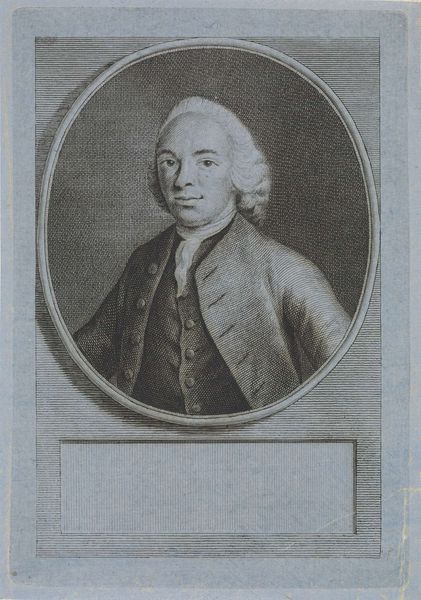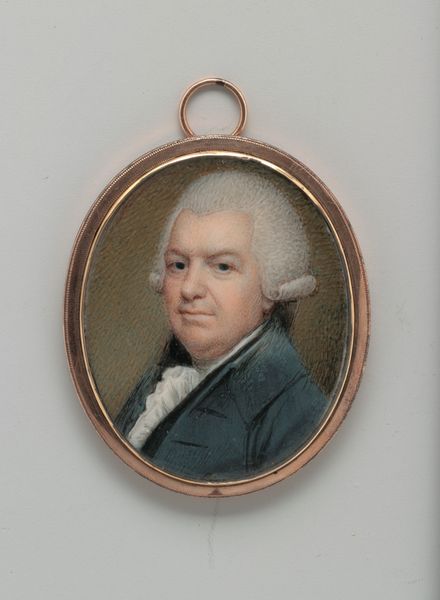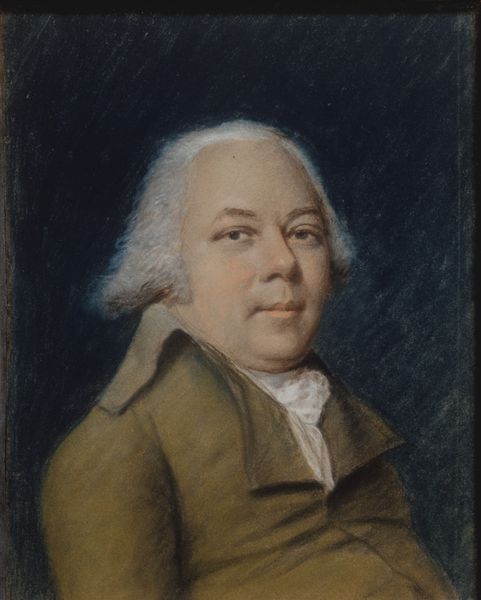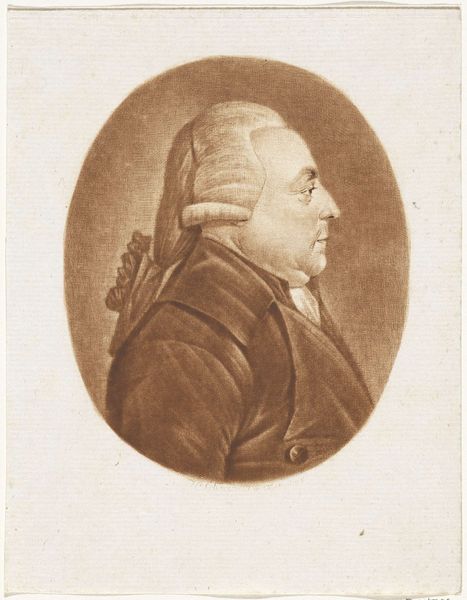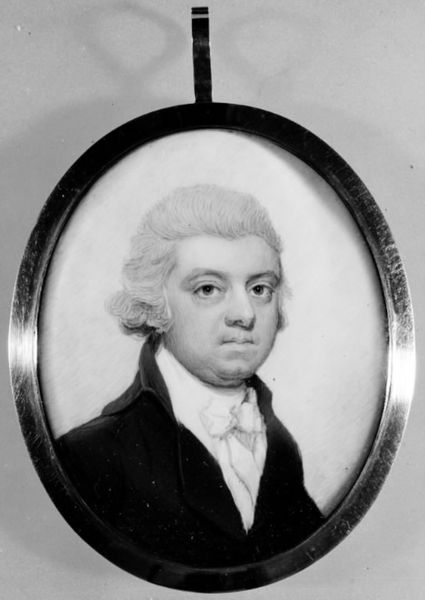
Portrait of Theodoor van Snakenburg (1695-1750). Leiden Jurist and Poet 1743
0:00
0:00
painting
#
portrait
#
baroque
#
painting
#
sculpture
#
genre-painting
#
miniature
Dimensions: height 11 cm, width 9.4 cm
Copyright: Rijks Museum: Open Domain
Curator: This is Hieronymus van der Mij's "Portrait of Theodoor van Snakenburg," created in 1743. Van Snakenburg, a Leiden jurist and poet, is captured here with remarkable detail. Editor: My immediate thought is one of formality, yet the composition feels strangely intimate. The scale emphasizes delicacy, demanding close scrutiny to appreciate its execution. Curator: The use of oil on panel allowed van der Mij to achieve that remarkable precision, typical of Baroque portraiture. The texture is so smooth. Consider how the light catches the wig, the subtle shading that defines his face. Editor: Indeed. Thinking about the labor, you can see the immense time invested in building those layers. I wonder about the availability and cost of the materials used, things that clearly demarcated status at the time, not to mention who made this panel, or mixed those paints. It speaks volumes about access and patronage. Curator: Absolutely, it’s a material manifestation of status. The circular format adds another layer of visual interest, drawing your eye inward. Note how van der Mij uses a limited palette— predominantly gray, white and black—which creates a harmonious and sophisticated feel. Editor: And that harmony points to the intended viewer. Was this commissioned to be hung in a private study, viewed only by Van Snakenburg’s circle? The materiality suggests this wasn't mass produced. Each choice from materials, paint to format has this quality that demands attention and intention. Curator: Precisely. It encourages a focused viewing experience. The choice of clothing, the meticulous wig, all speak to van Snakenburg’s refined identity. It’s an image consciously constructed to project a specific persona. Editor: Which is, I suppose, the ultimate material and social construct: an image created to embody a carefully constructed self, its value measured as much in labor as in representation. Curator: Seeing it like that makes it all the more engaging. Thank you. Editor: Thank you, too. That’s quite the object lesson in historical materiality.
Comments
No comments
Be the first to comment and join the conversation on the ultimate creative platform.
